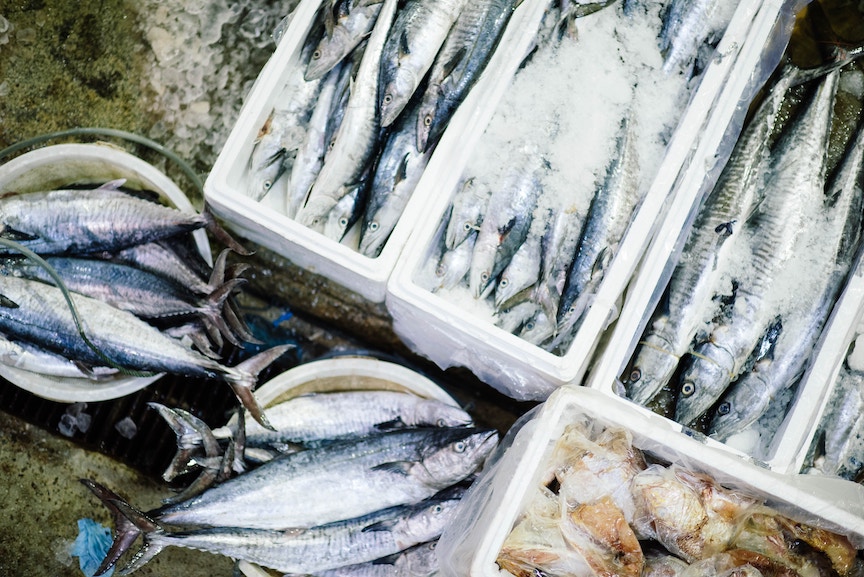Fish is a very important part of a healthy diet. Fish and other seafood are a major source of omega 3 fatty acids and are also rich in other nutrients such as vitamin D and selenium. Furthermore, fish is low in fat and high in protein. There is strong evidence that eating fish or taking fish oil is good for the heart, and can reduce the risk of heart disease by 36 percent.
To reap the benefits of fish, it is recommended that we eat fish two to three times per week. Unfortunately, fewer than one in five people follow that advice. The most common reasons for this are:
- some people simply dislike fish
- fish is perceived to be expensive
- quality fish may be difficult to come by
- uncertainty about how to prepare or cook fish
More recently, researchers realised that people avoid seafood because of fears about mercury content, pesticide residues and other possible toxins.
Should you forgo fish?
This is a controversial topic, that is often fueled more by emotion than by fact. Here’s what’s known about the benefits and risks of eating fish and other seafood:
Known or likely benefits:
In a comprehensive analysis, Harvard professors calculated that eating one or two servings of fatty fish a week reduces the chances of dying from heart disease by more than one-third. Furthermore, eating fish once or twice a week may also reduce the risk of stroke, depression and Alzheimer’s disease.
Possible risks:
Numerous pollutants make their way into the foods we eat, from fruits and vegetables to eggs, fish and meat. The contaminants that are most concerning today are mercury and polychlorinated biphenyls (PCBs). Very high levels of mercury can damage nerves in adults and disrupt development of the brain and nervous system in a fetus or young child.
Striking a Balance
Avoiding fish is certainly one way to avoid mercury or PCBs – but is that a wise choice, given the benefits of eating fish?
Here is how the research put in into perspective:
- If people eat farmed salmon twice a week for 70 years, the extra PCB intake could potentially cause 24 extra deaths from cancer, but would prevent at least 7,000 deaths from heart disease.
- Levels of PCBs in fish are very low, similar to levels found in meat, dairy products and eggs.
- More than 90 percent of the PCBs in food supply come from such non-seafood sources, including meats, dairy, eggs and vegetables. One exception: if you eat local caught freshwater fish, it makes sense to consult local advisories about the amounts of such fish you should eat.
- In fact, the easiest way to avoid concern about contaminants is simply to eat a variety of different fish and other seafood.
Levels of mercury in different seafood:
Lower Mercury
- Mussels
- Squid
- Atlantic mackerel
- Salmon
- Cod
- Lobster
- Haddock
- Skipjack tuna
Higher Mercury
- Spanish mackerel
- Bluefin tuna
- Swordfish
Source: BBC iWonder (no longer available online)
Try this delicious Slender Wonder Ceviche Recipe
Ingredients
| Simeon | Go Moderate | Stabilisation | Maintenance | Ingredient |
|---|---|---|---|---|
| 100g | 120g | 150g | 200g | Shrimp, cooked and cooled |
| 45ml | 55ml | 70ml | 90ml | Lemon juice |
| 20g | 25g | 25g | 35g | Onion, chopped |
| 1 | 1 | 1½ | 2 | Clove(s) garlic, crushed and minced |
| 2g | 2.5g | 2.5g | 3g | Fresh Parsley, chopped |
| 100g | 125g | 125g | 165g | Tomatoes, diced |
| Tabasco to taste | ||||
| Herbal salt | ||||
| Freshly ground black pepper to taste |
Method
- Steam the shrimp or fish and let it cool down.
- Add lemon juice, onion, garlic and chopped parsley.
- Stir in diced tomatoes and Tabasco.
- Chill and marinate the ingredients in the refrigerator.
Traditionally, ceviche is not cooked. The citric acids “cook” the fish. This can be an alternative to cooking the shrimp.
